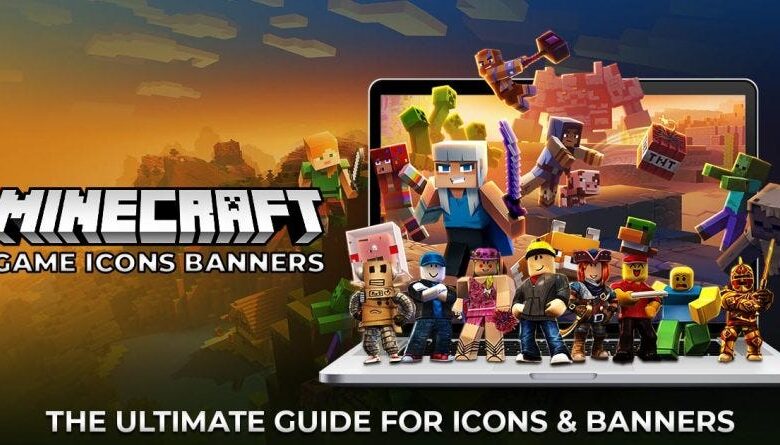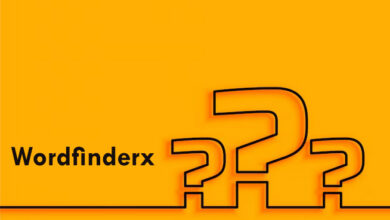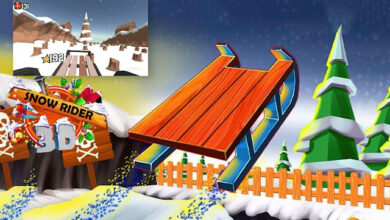Minecraft (2009) Game Icons Banners Collection

Minecraft, originally released in 2009, is a game that has stood the test of time, captivating millions of players around the globe. Its charm lies in its simplicity and endless possibilities for creativity. From its distinctive blocky graphics to the open-world exploration, Minecraft has inspired a generation of gamers and creators alike. As the game has evolved, so has its in-game customization options, particularly with the introduction of banners and icons. These banners and icons are not just decorative elements; they serve as representations of players, teams, and even communities within the game. In this article, we’ll dive deep into the fascinating world of Minecraft (2009) Game Icons Banners, exploring their significance, how they’ve developed over time, and the creative possibilities they offer.
The Early Days of Minecraft (2009)
Before we delve into the specifics of banners and icons, it’s essential to understand where Minecraft began. Released by Markus “Notch” Persson in May 2009, Minecraft was initially a simple sandbox game where players mined resources and built structures in a procedurally generated world. The pixelated graphics became an iconic aspect of the game, with blocks representing various materials such as stone, wood, and dirt.
Customization in these early versions of Minecraft was relatively limited. Players could build structures and create pixel art using the available materials, but there were no specific tools for designing banners or icons. However, the game’s modding community quickly realized the potential for customization and began developing unofficial mods to introduce these elements. These early mods allowed players to create their own in-game symbols, flags, and other visual representations.
Evolution of Minecraft Icons and Banners
As Minecraft progressed beyond its initial beta phase, the developers started incorporating more options for in-game customization. The addition of banners in Minecraft 1.8 (released in 2014) was one of the first significant changes that allowed players to personalize their gaming experience on a much deeper level. However, even though banners were officially introduced in 2014, they hold a critical place in the legacy of Minecraft (2009), as their evolution is tightly connected to the game’s early development.
Minecraft Icons: A Symbol of Identity
In the game, icons serve as symbols representing players, teams, or groups. Whether you’re playing on a multiplayer server or setting up your world, icons allow players to distinguish themselves. In the early Minecraft multiplayer communities, players used colored names or skins to identify themselves. However, the introduction of icons elevated the concept of identity and group affiliation in the game.
Icons are often associated with servers or modded games, where they represent factions, kingdoms, or even countries built within the Minecraft world. For example, in large role-playing servers, factions use unique icons to mark their territory or distinguish their members. These icons can be designed using tools like Minecraft’s custom resource packs or mods that allow for the creation of custom images.
In addition to multiplayer communities, icons also play a significant role in the game’s UI. The simplicity of Minecraft’s original icons, which are used for inventory items, crafting menus, and player profiles, reflects the game’s minimalist aesthetic. The early icons were pixelated but clearly recognizable, aligning with the retro art style that defined Minecraft’s look. Over time, the community has embraced the idea of creating personalized icons, pushing the limits of Minecraft’s design capabilities with custom textures and modded servers.
The Introduction of Banners
Banners were a game-changer when they were introduced in Minecraft 1.8. These tall, flowing flags could be designed using a simple crafting recipe and a wide range of dyes, allowing players to create countless unique designs. A banner in Minecraft consists of a base color, which can be further customized by adding patterns using a crafting table or loom.
Banners are created by combining wool and sticks in the crafting table. After creating the basic banner, players can apply patterns to it using dyes. By arranging dyes and specific items like vines, bricks, or even enchanted golden apples, players can create complex, multi-layered designs. Each banner can have up to six patterns, which are applied on top of each other to form intricate and distinctive symbols.
In survival mode, banners often serve practical purposes. Players can use them to mark specific locations, such as their base, a village, or a mine. They are also commonly used in multiplayer servers, where they can represent factions or teams. For example, players in a team-based minigame might display their team’s banner outside their base as a symbol of unity.
In creative mode, the potential for banner design is limitless. Players have used banners to create everything from national flags to custom logos for their Minecraft worlds. Some of the most impressive banners feature intricate designs, resembling medieval coats of arms, corporate logos, or even pixel art of famous characters. The customization options available for banners are vast, and players continue to innovate, pushing the limits of Minecraft’s design tools.
Customization and Creativity in Minecraft Banners
The power of customization in Minecraft is most evident when it comes to banners. Each banner design reflects the creativity of the player, and there are virtually no restrictions on what players can create. With the variety of available dyes and patterns, every player can produce a unique banner that suits their style or needs.
One notable aspect of Minecraft banners is the incorporation of Loom, a block introduced in Minecraft 1.14, which makes designing banners much more user-friendly. With the Loom, players can easily visualize their patterns as they combine different layers, without the trial-and-error of earlier crafting methods.
Types of Banner Patterns
Players can create various patterns on their banners, from simple shapes like stripes and crosses to more complex patterns like creeper faces or skull and crossbones. Some patterns require rare items, such as enchanted golden apples or wither skeleton skulls, which adds an extra layer of accomplishment when creating a particularly rare banner.
Some popular banner designs include:
- Stripes and Crosses: These are the simplest patterns and often serve as the base for more complex designs.
- Creeper Charge: A pattern created using a creeper head, resulting in a banner with a pixelated creeper face.
- Flower Charge: A design resembling a flower, created with an oxeye daisy.
- Skull and Crossbones: A pirate-themed pattern created with a wither skeleton skull.
- Mojang Logo: A rare pattern created with an enchanted golden apple, representing the game’s developer.
Players can stack these patterns on top of one another to create complex and visually stunning designs. Banners can also be placed on shields, allowing players to carry their personalized designs into battle.
Minecraft Community and Banners
The Minecraft community has embraced banners and icons as a way to express individuality and creativity. Entire websites and forums are dedicated to sharing banner designs, providing inspiration for other players. Many players enjoy the challenge of creating recognizable designs, such as national flags, superhero logos, or even pop culture references, using Minecraft’s limited design tools.
Some servers have taken banners to a whole new level by organizing contests where players compete to create the best banner designs. These competitions encourage creativity and inspire players to think outside the box when designing their banners.
Moreover, banners have become a significant aspect of Minecraft’s multiplayer culture. Whether used to represent factions in PvP servers or to mark territory in survival worlds, banners help foster a sense of identity and community within the game.
Minecraft Mods and Banner Customization
While the vanilla game offers a wide range of customization options, the modding community has expanded these possibilities even further. Mods like Banner Additions or Banner Expansion introduce new patterns, colors, and crafting options, allowing for even greater customization. Some mods even allow players to upload custom images as banner patterns, opening the door to nearly limitless creative potential.
Custom Icons in Modded Servers
Modded Minecraft servers often feature custom icons and banners that players can use to further distinguish their characters or factions. These icons can be designed outside of Minecraft and then imported into the game using resource packs or mods. This level of customization is especially popular in role-playing servers, where players want to create unique identities for their characters or factions.
Conclusion
The Minecraft (2009) Game Icons Banners have become integral aspects of the game’s customization, representing identity, creativity, and community spirit. Whether you’re marking your territory in a survival world or creating a custom banner to display in your base, the possibilities are endless. The game’s evolution from its early pixelated graphics to the complex designs players create today demonstrates how much Minecraft has grown, yet it still retains its core charm.
Icons and banners, while seemingly simple, have become a powerful medium for players to express themselves and leave their mark on the Minecraft world. As the game continues to evolve, we can only imagine how these creative tools will continue to expand, offering players even more ways to personalize their gaming experience.
FAQs
1. How do you make a banner in Minecraft?
To create a banner, you’ll need six pieces of wool and one stick. Arrange the wool in two rows of three in a crafting table, with the stick in the bottom middle slot. After crafting a banner, you can customize it using dyes and a loom to create patterns.
2. Can banners be placed on shields in Minecraft?
Yes, you can place a banner on a shield by combining them in a crafting table. This allows you to carry your custom banner design into battle as part of your shield decoration.



